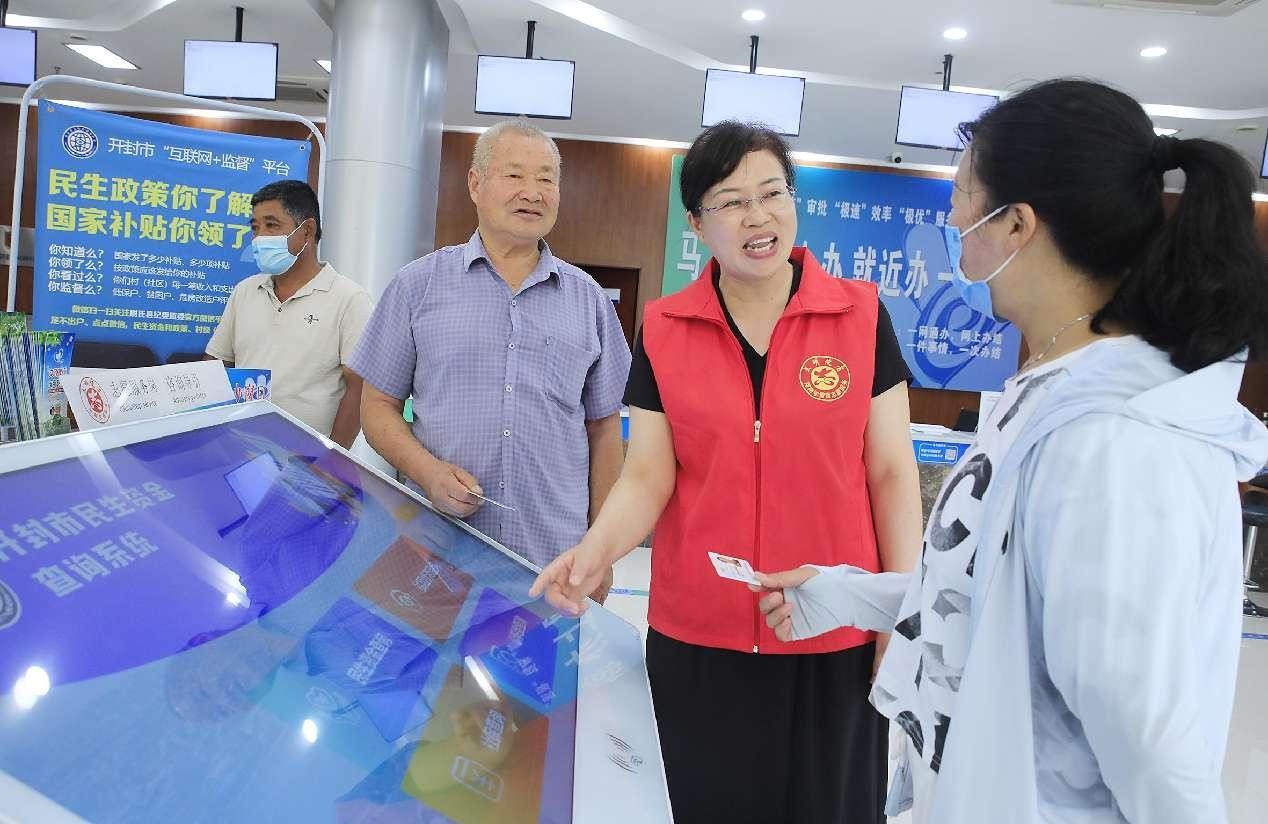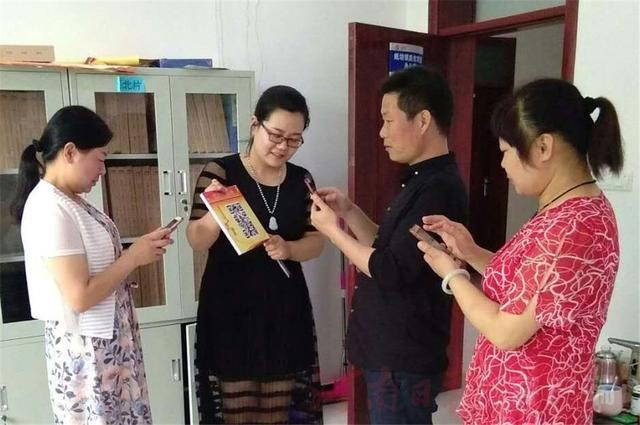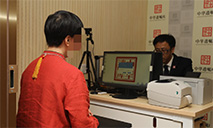QR code helps rural residents gain clear understanding of government policies
By scanning a QR code with mobile phone, Shen Jihong, a resident in Xiaoli village, Liangma township, Anze county, Linfen city, north China’s Shanxi province, can check basic information, engagement in industries, income details, contact officials in charge of poverty elimination and other kinds of important information and government policies.

Officials with the agriculture and rural affairs committee under the government of Quanjiao county, Chuzhou city, east China’s Anhui province, help farmers scan QR codes to learn about the latest policies on supporting the development of rural areas. (People’s Daily Online/Li Xiaocun)
To ensure every household has access to all kinds of information and various policies, the government of Anze county has boosted connectivity of information among government departments and promoted the application of a mini program named Yi Ma Qing, which means “the QR code that provides all-rounded knowledge” in Chinese.
In recent years, many cities in Shanxi province have used such QR codes to collect information about people’s production and life and help grassroots officials better explain policies and promote the implementation of these policies. Today, such QR codes are playing a greater role in advancing rural vitalization in Shanxi province.
The essence of the QR codes is that they offer people an innovative and direct way to gain a thorough and clear understanding of information and policies.
Yanggao county, Datong city, Shanxi, attached a QR code to every piece of clean heating equipment during the replacement of coal with electricity, which specifies details about relevant policies and subsidies.

Residents of Xiaoximen village, Weishi county, Kaifeng city, central China’s Henan province, check whether their subsistence allowance has arrived in their accounts via an Internet-based supervision platform in a local government affairs service center. (People’s Daily Online/Li Xinyi)
Such QR codes serve as a new and effective channel for governments to introduce policies to households and help avoid inadequate explanation of policies.
At present, China is promoting all-round rural vitalization and has set higher requirements for precise public services, which makes it particularly important to have a comprehensive and accurate understanding of the actual conditions of rural areas and update data on rural development in a timely manner.
The QR codes widely used in Shanxi also focus on scientific management and targeted measures. The QR code of Shen’s family shows information about training in tea-frying skills and rural tourism projects participated by members of the family. Such basic information serves as an important foundation for the local government to formulate targeted measures for further improving the quality of local people’s lives.
Based on the actual situation of each household, relevant government departments can provide targeted assistance for people. They strengthen guidance for households with skills to help them run business according to industry regulations and rules; organize training in special skills for farmer households with an urgent need for employment according to their age, gender, and strong point; and guarantee timely and adequate food subsidy, medical insurance, and other forms of assistance in meeting the basic needs of relatively vulnerable households, while maintaining dynamic monitoring of the situation of these households for early warning.

An official with the poverty relief office of Zhifang township, Ruzhou city, central China’s Henan province, shows members of poor household and contact official in charge of poverty alleviation how to use a QR code designed to learn about information about poverty alleviation efforts and projects. (Photo/Henan Daily)
While providing information about rural households, these QR codes test the precision of policies and measures as well as the quality of public services, and witness improvement in governance capability and performance.
To push forward rural vitalization, officials need to keep close track of and get dynamic feedback on the development of industries and people’s income and living environment.
“Officials can gain a better understanding of rural development by leveraging data to quantify outcomes of work. More ways will be adopted to make good use of data, including generating a QR code for each village,” said a grassroots official.
It’s believed that by helping officials get a better understanding of the people and the people gain full knowledge of policies, the use of QR codes will facilitate more benign interactions between officials and rural residents.
By continuing exploring ways to leverage digital means to help with local governance and improve the quality of public services and the effectiveness of public policies, Chinese cities will embrace a brighter future of rural vitalization and generate more opportunities for increasing people’s incomes.
Photos
 Increasingly more young adults in China register wills that include virtual assets
Increasingly more young adults in China register wills that include virtual assets Rapeseed flowers turn NW China's Luoping into picturesque spring wonderland
Rapeseed flowers turn NW China's Luoping into picturesque spring wonderland Why do people in China fall for animated characters like LinaBell and Bing Dwen Dwen?
Why do people in China fall for animated characters like LinaBell and Bing Dwen Dwen? Photo Album: architecture in Beijing merging history and modernity
Photo Album: architecture in Beijing merging history and modernity
Related Stories
- The QR code that saves lives
- Health QR code facilitates China's epidemic prevention and control
- QR codes help bring new vitality to Chinese economy
- Chinese cities adopt QR codes to help with epidemic control
- Tax payments via QR codes promoted in China for epidemic control
- Over 60 percent of Chinese use QR codes
- Experts call for unified standard on QR codes to promote trade integration
- QR codes offer stories behind landmark buildings in Shanghai
- Scan a QR Code and Get a Job!
- Huge QR code lawn that plays music in Hefei, Anhui Province
Copyright © 2022 People's Daily Online. All Rights Reserved.






